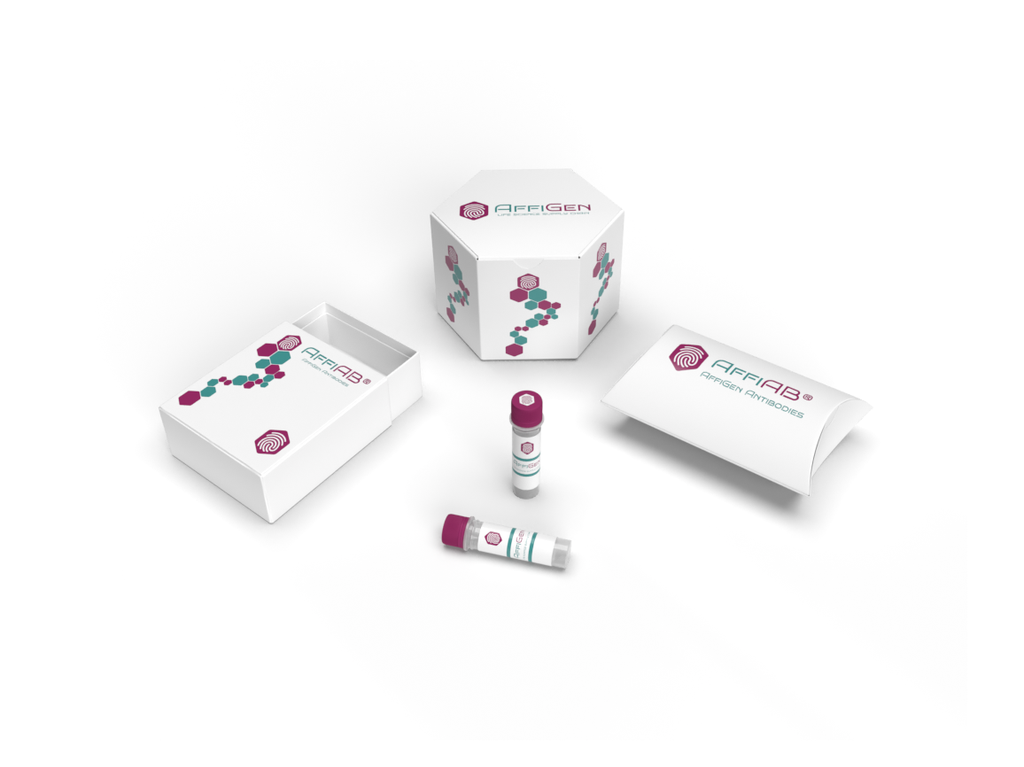AffiAB® Anti-NLRP3 Antibody
NLR family pyrin domain containing 3 (NLRP3) (previously known as NACHT, LRR and PYD domains-containing protein 3 [NALP3] and cryopyrin) , is a protein that in humans is encoded by the NLRP3 gene located on the long arm of chromosome 1. NLRP3 is expressed predominantly in macrophages and as a component of the inflammasome, products of damaged cells such as extracellular ATP and crystalline uric acid. Activated NLRP3 in turn triggers an immune response. Mutations in the NLRP3 gene are associated with a number of organ specific autoimmune diseases. Cryopyrin interacts selectively with apoptosis associated specklike protein containing a CARD domain (ASC) . This complex may function as an upstream activator of NFkB signaling and caspase-1 activation. The complex also inhibits TNFa induced activation and nuclear translocation of RelA/NFkB p65. Mutations in Cryopyrin and Pyrin proteins are responsible for several autoinflammatory disorders in humans, including familial cold autoinflammatory syndrome (FCAS) , Muckle-Wells syndrome (MWS) and chronic infantile neurologic cutaneous and articular syndrome (CINCA) .
Antibody type
Rabbit polyclonal Antibody
Uniprot ID
SwissProt: Q96P20 Human; SwissProt: Q8R4B8 Mouse
Recombinant
NO
Conjugation
Non-conjugated
Host
Rabbit
Isotype
IgG
Clone
N/A
KO/KD
N/A
Species reactivity
Human, Mouse
Tested applications
WB, IF-Cell, IHC-P, FC
Predicted species reactivity
N/A
Immunogen
Synthetic peptide within Human NLRP3 aa 987-1, 036 / 1, 036.
Storage
Store at +4°C after thawing. Aliquot store at -20°C or -80°C. Avoid repeated freeze / thaw cycles.
Form
Liquid
Storage buffer
1*PBS (pH7.4) , 0.2% BSA, 50% Glycerol. Preservative: 0.05% Sodium Azide.
Concentration
1 mg/mL.
Purity
Immunogen affinity purified.
Signal pathway
细胞焦亡, Immunology & Inflammation
Recommended dilutions
WB: 1:500-1:2, 000; IF-Cell: 1:500-1:2, 000; IHC-P: 1:50-1:200; FC: 1:50-1:100
Molecular Weight
Predicted band size: 118 kDa
Subcellular location
Nucleus. Cytoplasm. Secreted.
Positive control
LOVO cell lysate, A431, HepG2, LOVO, human liver cancer tissue, human colon cancer tissue, human placenta tissue, mouse brain tissue, mouse kidney tissue, Jurkat.
